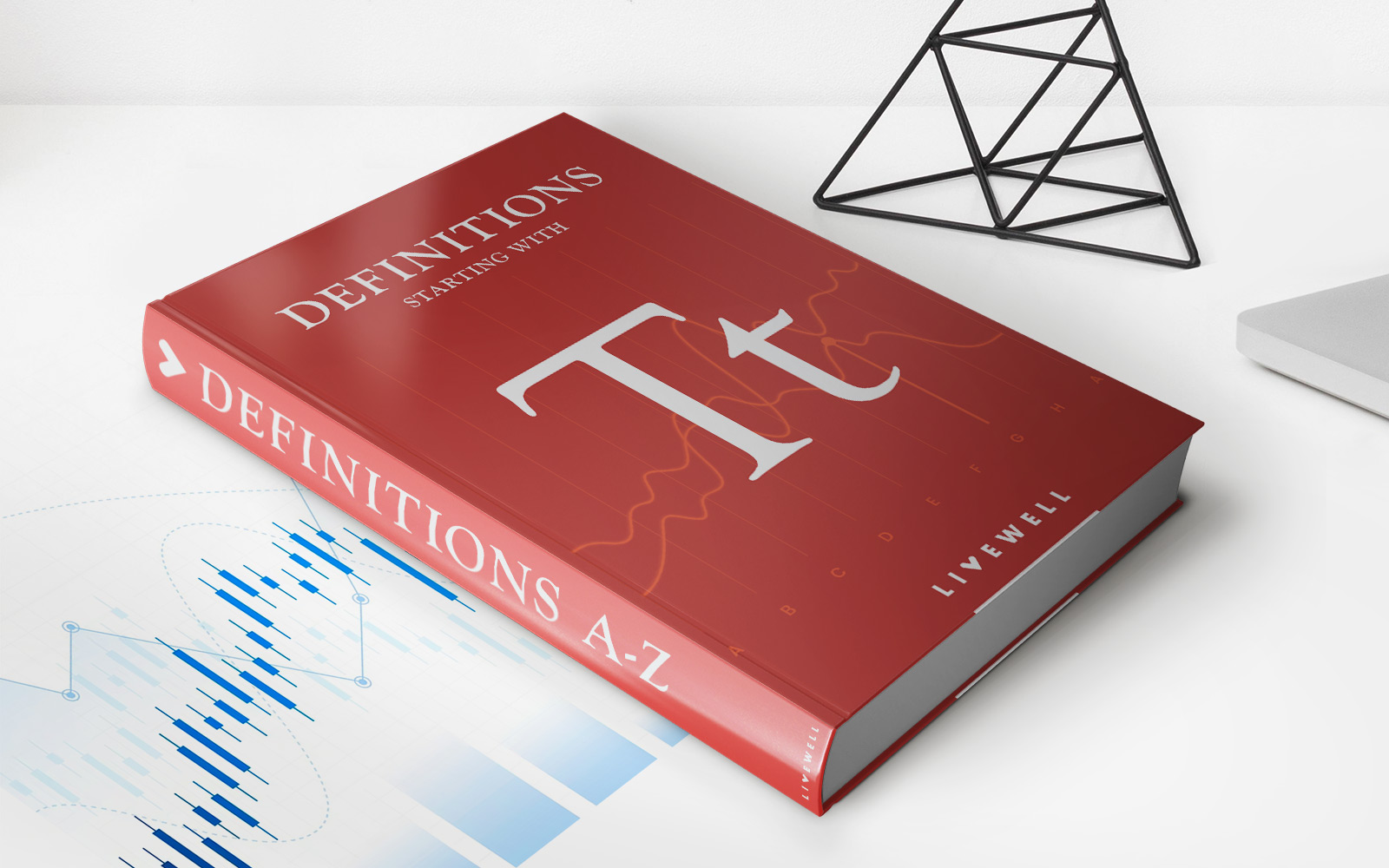Home>Finance>What Are Some Sources Of Inherent Risk In Mergers And Acquisitions LO9


Finance
What Are Some Sources Of Inherent Risk In Mergers And Acquisitions LO9
Published: February 24, 2024
Discover the inherent risks in mergers and acquisitions and their impact on finance. Learn about the sources of risk in M&As. Gain insights on finance-related challenges.
(Many of the links in this article redirect to a specific reviewed product. Your purchase of these products through affiliate links helps to generate commission for LiveWell, at no extra cost. Learn more)
Table of Contents
Introduction
Mergers and acquisitions (M&A) are strategic initiatives that enable companies to expand their market share, diversify their product offerings, and achieve synergies that lead to enhanced competitiveness. However, the process of M&A is not without its challenges, and one of the critical aspects that demand meticulous attention is inherent risk. Inherent risk refers to the exposure to potential loss or misstatement due to circumstances such as external market conditions, industry changes, or operational inefficiencies. Identifying and understanding the sources of inherent risk in M&A is paramount for stakeholders to make informed decisions and mitigate potential negative impacts.
In the context of M&A, inherent risk can manifest in various forms, encompassing financial, operational, legal, cultural, technological, and regulatory dimensions. Each of these dimensions harbors unique challenges and complexities that can significantly influence the success or failure of the M&A endeavor. By delving into the sources of inherent risk within each dimension, stakeholders can proactively devise risk mitigation strategies and bolster the likelihood of a successful M&A outcome.
Understanding the sources of inherent risk in M&A is akin to navigating through a multifaceted labyrinth, where each turn presents a new set of challenges and opportunities. As we embark on this exploration, we will unravel the intricacies of financial risk, operational risk, legal and regulatory risk, cultural and human resources risk, and technology and information risk. By dissecting these dimensions, we aim to equip stakeholders with a comprehensive understanding of the potential pitfalls and vulnerabilities inherent in the M&A landscape. Moreover, this knowledge will serve as a compass, guiding stakeholders toward informed decision-making and risk management practices that fortify the foundation of M&A transactions.
Financial Risk
Financial risk constitutes a pivotal dimension of inherent risk in mergers and acquisitions, encompassing a spectrum of challenges that can exert substantial influence on the financial health and stability of the involved entities. One of the primary sources of financial risk in M&A is the potential for overvaluation or undervaluation of the target company. Inaccurate valuation can lead to significant financial repercussions, impacting the acquirer’s capital structure, financial performance, and shareholder value. Moreover, discrepancies in financial reporting and accounting practices between the acquiring and target companies can introduce complexities that heighten the risk of financial misstatements and inaccuracies.
Another source of financial risk lies in the realm of capital structure and leverage. M&A transactions often involve substantial capital infusion and debt restructuring, which can elevate the acquirer’s leverage ratios and financial obligations. The increased debt burden may amplify the financial risk exposure, particularly in scenarios where the post-merger integration fails to deliver the anticipated synergies and cost efficiencies. Furthermore, fluctuations in interest rates, credit markets, and foreign exchange rates can introduce volatility and uncertainty, compounding the financial risk landscape.
Additionally, liquidity risk emerges as a critical consideration in M&A, as the allocation of financial resources and working capital management becomes increasingly intricate. Inadequate liquidity planning and cash flow management can impede the seamless integration of the acquiring and target entities, leading to operational disruptions and financial strain. Furthermore, changes in market conditions and economic downturns can exacerbate liquidity risk, underscoring the importance of robust financial contingency planning and risk mitigation strategies.
As stakeholders navigate the intricate terrain of financial risk in M&A, it is imperative to adopt a comprehensive approach that encompasses rigorous due diligence, meticulous financial analysis, and proactive risk management. By addressing the sources of financial risk head-on and implementing strategic measures to mitigate potential adversities, stakeholders can bolster the financial resilience and sustainability of the M&A transaction, paving the way for a more robust and prosperous post-merger landscape.
Operational Risk
Operational risk constitutes a pivotal dimension of inherent risk in mergers and acquisitions, encompassing a spectrum of challenges that can exert substantial influence on the operational efficiency, business continuity, and value realization of the combined entity. One of the primary sources of operational risk in M&A pertains to the integration of disparate operational frameworks, processes, and technologies. Misalignment in operational systems and workflows between the acquiring and target companies can give rise to inefficiencies, productivity bottlenecks, and operational disruptions, impeding the seamless post-merger integration and value creation.
Furthermore, human capital risk emerges as a critical consideration in the operational dimension, as the harmonization of organizational cultures, talent retention, and workforce integration becomes a pivotal determinant of the M&A success. Cultural clashes, leadership transitions, and talent attrition can engender operational complexities that undermine the synergistic potential of the merger, necessitating strategic human resources management and change leadership to mitigate the associated risks.
Technology and information risk also permeate the operational landscape of M&A, as the convergence of disparate IT infrastructures, data systems, and cybersecurity protocols introduces vulnerabilities and complexities. Inadequate data security measures, interoperability challenges, and technology obsolescence can amplify the risk of operational disruptions, data breaches, and regulatory non-compliance, underscoring the imperative of robust technology due diligence and post-merger IT integration strategies.
As stakeholders navigate the multifaceted terrain of operational risk in M&A, it is paramount to adopt a holistic approach that encompasses meticulous operational due diligence, change management, and technology integration. By proactively addressing the sources of operational risk and implementing strategic measures to harmonize operational frameworks, empower human capital, and fortify technological resilience, stakeholders can enhance the operational agility and value realization potential of the combined entity, setting the stage for a more seamless and prosperous post-merger journey.
Legal and Regulatory Risk
Legal and regulatory risk represents a critical dimension of inherent risk in mergers and acquisitions, encompassing a myriad of challenges that can significantly impact the compliance, governance, and legal standing of the combined entity. One of the primary sources of legal and regulatory risk in M&A pertains to the intricacies of compliance with antitrust laws, competition regulations, and merger control provisions. Failure to navigate the complex web of antitrust regulations and obtain requisite approvals can lead to legal entanglements, regulatory sanctions, and impediments to the merger’s progression, highlighting the imperative of comprehensive antitrust due diligence and proactive engagement with regulatory authorities.
Moreover, contractual and liability risk emerges as a pivotal consideration in the legal dimension, as the alignment of contractual obligations, indemnities, and liabilities between the acquiring and target entities becomes a critical determinant of legal resilience and risk mitigation. Inadequate assessment of contractual liabilities, intellectual property rights, and legal disputes can expose the combined entity to legal vulnerabilities, financial repercussions, and reputational damage, underscoring the necessity of meticulous legal due diligence and contractual risk management.
Furthermore, regulatory compliance and governance risk permeate the legal landscape of M&A, as the convergence of disparate regulatory frameworks, reporting requirements, and corporate governance practices introduces complexities and vulnerabilities. Inadequate adherence to regulatory mandates, compliance oversights, and governance misalignments can engender legal and reputational risks, necessitating robust compliance audits, governance harmonization, and regulatory alignment strategies to fortify the legal and regulatory posture of the combined entity.
As stakeholders navigate the intricate terrain of legal and regulatory risk in M&A, it is paramount to adopt a meticulous and proactive approach that encompasses comprehensive legal due diligence, regulatory compliance assessments, and contractual risk mitigation. By addressing the sources of legal and regulatory risk head-on and implementing strategic measures to fortify legal compliance, contractual resilience, and governance alignment, stakeholders can enhance the legal standing and regulatory robustness of the combined entity, laying the groundwork for a more legally resilient and ethically sound post-merger trajectory.
Cultural and Human Resources Risk
The dimension of cultural and human resources risk in mergers and acquisitions encompasses a spectrum of challenges that can significantly influence the organizational cohesion, talent retention, and cultural integration of the combined entity. One of the primary sources of cultural and human resources risk in M&A pertains to the alignment of organizational cultures, values, and leadership dynamics. Cultural disparities, divergent work practices, and leadership transitions can give rise to employee disengagement, morale erosion, and productivity impediments, underscoring the imperative of cultural due diligence and change management strategies.
Moreover, talent retention and human capital risk emerge as critical considerations in the human resources dimension, as the harmonization of workforce competencies, career pathways, and talent development becomes a pivotal determinant of post-merger performance. Inadequate talent retention strategies, skillset mismatches, and cultural assimilation challenges can engender human resources complexities that undermine the synergistic potential of the merger, necessitating strategic human capital management and talent integration initiatives to mitigate associated risks.
Furthermore, communication and change management risk permeate the cultural landscape of M&A, as the dissemination of merger-related information, organizational restructurings, and change initiatives introduces uncertainties and apprehensions among employees. Inadequate communication strategies, change resistance, and cultural misalignments can amplify the risk of employee dissonance and resistance, necessitating robust communication frameworks and change leadership to foster organizational cohesion and mitigate cultural and human resources risks.
As stakeholders navigate the intricate terrain of cultural and human resources risk in M&A, it is paramount to adopt a people-centric approach that encompasses empathetic change management, talent retention strategies, and cultural integration initiatives. By proactively addressing the sources of cultural and human resources risk and implementing strategic measures to harmonize organizational cultures, empower human capital, and foster transparent communication, stakeholders can enhance the cultural synergy and talent retention potential of the combined entity, fostering a more cohesive and resilient post-merger workforce.
Technology and Information Risk
Technology and information risk represent a critical dimension of inherent risk in mergers and acquisitions, encompassing a myriad of challenges that can significantly impact the cybersecurity, IT integration, and data resilience of the combined entity. One of the primary sources of technology and information risk in M&A pertains to the convergence of disparate IT infrastructures, data systems, and cybersecurity protocols. Incompatible technology stacks, cybersecurity vulnerabilities, and data privacy concerns can introduce complexities that heighten the risk of data breaches, operational disruptions, and regulatory non-compliance, underscoring the imperative of robust technology due diligence and post-merger IT integration strategies.
Moreover, cybersecurity and data privacy risk emerge as critical considerations in the technology dimension, as the safeguarding of sensitive data, intellectual property, and customer information becomes a pivotal determinant of the post-merger trust and operational resilience. Inadequate data security measures, regulatory non-compliance, and technology obsolescence can expose the combined entity to cybersecurity vulnerabilities, reputational damage, and legal ramifications, necessitating meticulous cybersecurity assessments and data protection strategies to mitigate associated risks.
Furthermore, IT governance and infrastructure risk permeate the technology landscape of M&A, as the alignment of IT governance frameworks, infrastructure scalability, and technology roadmaps introduces complexities and vulnerabilities. Inadequate IT governance structures, infrastructure misalignments, and technology redundancies can amplify the risk of operational inefficiencies, technology disruptions, and resource misallocations, necessitating robust IT governance audits, infrastructure rationalization, and technology alignment strategies to fortify the technology and information resilience of the combined entity.
As stakeholders navigate the intricate terrain of technology and information risk in M&A, it is paramount to adopt a comprehensive approach that encompasses rigorous technology due diligence, cybersecurity fortification, and IT governance alignment. By addressing the sources of technology and information risk head-on and implementing strategic measures to fortify data security, IT governance, and technology integration, stakeholders can enhance the technological resilience and data protection potential of the combined entity, laying the groundwork for a more secure and operationally robust post-merger landscape.
Conclusion
As the multifaceted landscape of mergers and acquisitions continues to evolve, the comprehension and proactive management of inherent risk dimensions are paramount for stakeholders seeking to navigate the complexities of M&A transactions. The exploration of financial risk, operational risk, legal and regulatory risk, cultural and human resources risk, and technology and information risk have unveiled a tapestry of challenges and vulnerabilities that underscore the imperative of comprehensive due diligence, strategic foresight, and proactive risk mitigation.
It is evident that the sources of inherent risk in M&A are deeply intertwined with the fabric of organizational dynamics, market complexities, and regulatory landscapes, necessitating a holistic and meticulous approach to risk management. By embracing a proactive stance that encompasses rigorous due diligence, empathetic change management, and technology fortification, stakeholders can fortify the resilience and sustainability of the combined entity, fostering a post-merger landscape that is characterized by operational agility, legal compliance, cultural synergy, and technological robustness.
Furthermore, the recognition of inherent risk sources in M&A serves as a catalyst for informed decision-making, strategic planning, and the cultivation of a risk-aware organizational culture. By leveraging the insights gleaned from the delineation of inherent risk dimensions, stakeholders can proactively identify potential pitfalls, devise risk mitigation strategies, and engender a more resilient and prosperous post-merger trajectory. The strategic integration of risk management practices into the fabric of M&A transactions not only enhances the likelihood of successful value realization but also fosters a culture of adaptability, innovation, and strategic resilience.
In essence, the comprehension and strategic management of inherent risk sources in M&A are pivotal enablers that empower stakeholders to navigate the complexities of the M&A landscape with confidence, foresight, and resilience. By embracing a multifaceted approach that addresses financial, operational, legal, cultural, and technological dimensions of inherent risk, stakeholders can pave the way for a post-merger journey that is characterized by value creation, operational excellence, and sustainable growth, propelling the combined entity toward a future imbued with strategic prosperity and enduring success.














